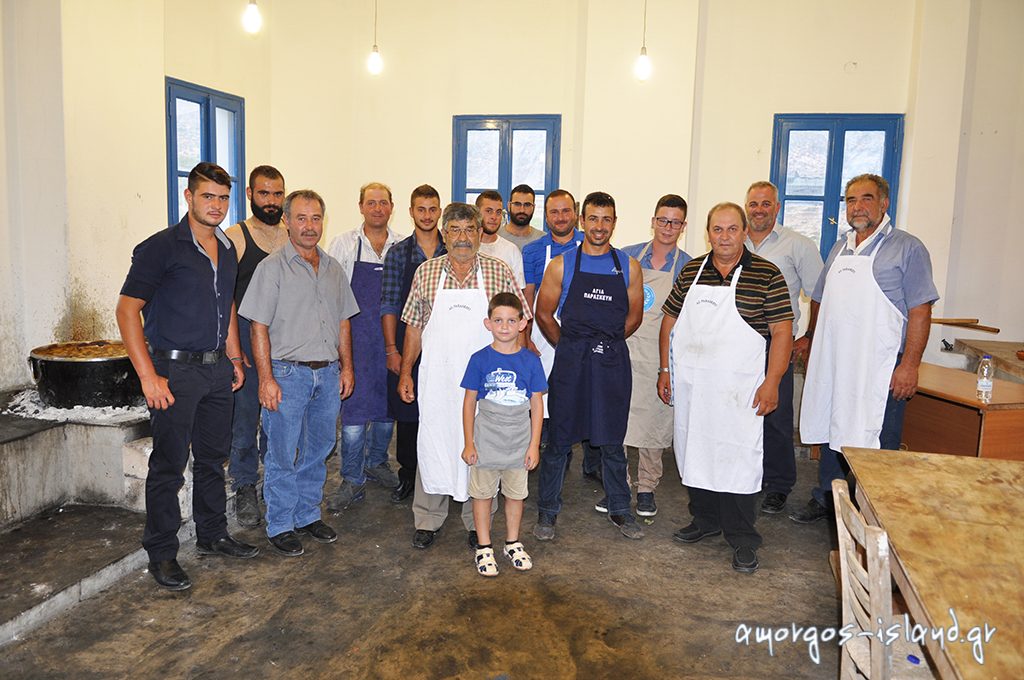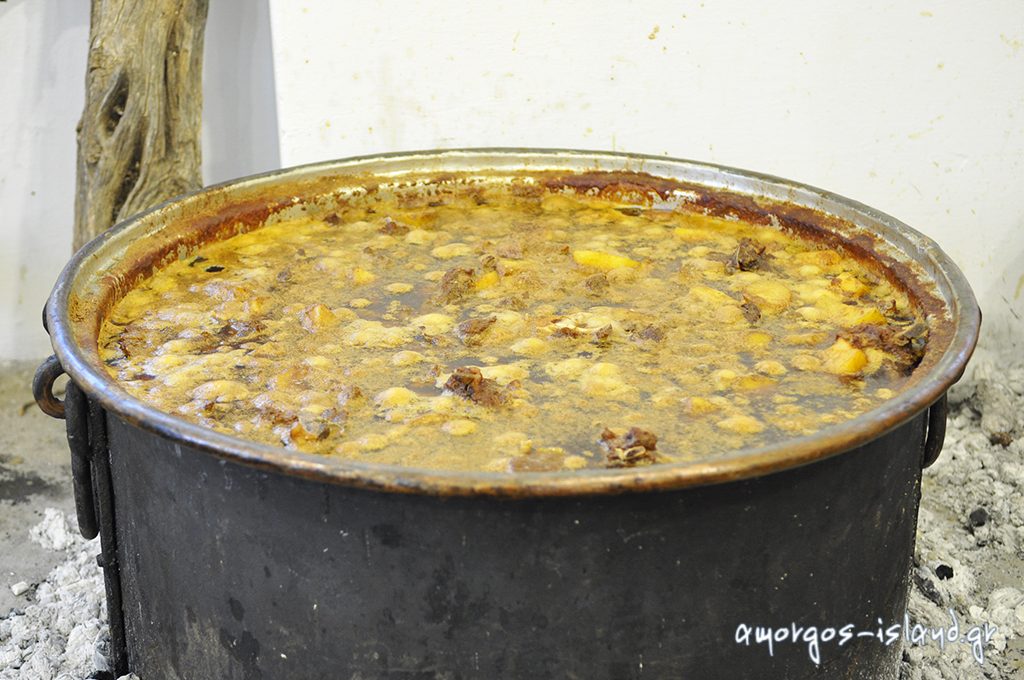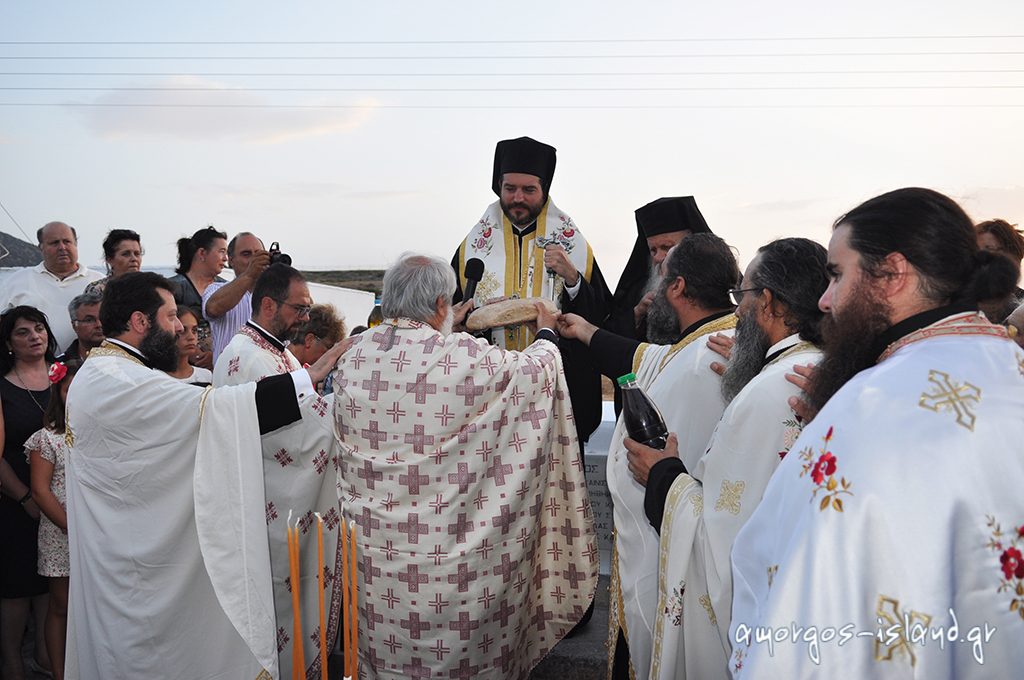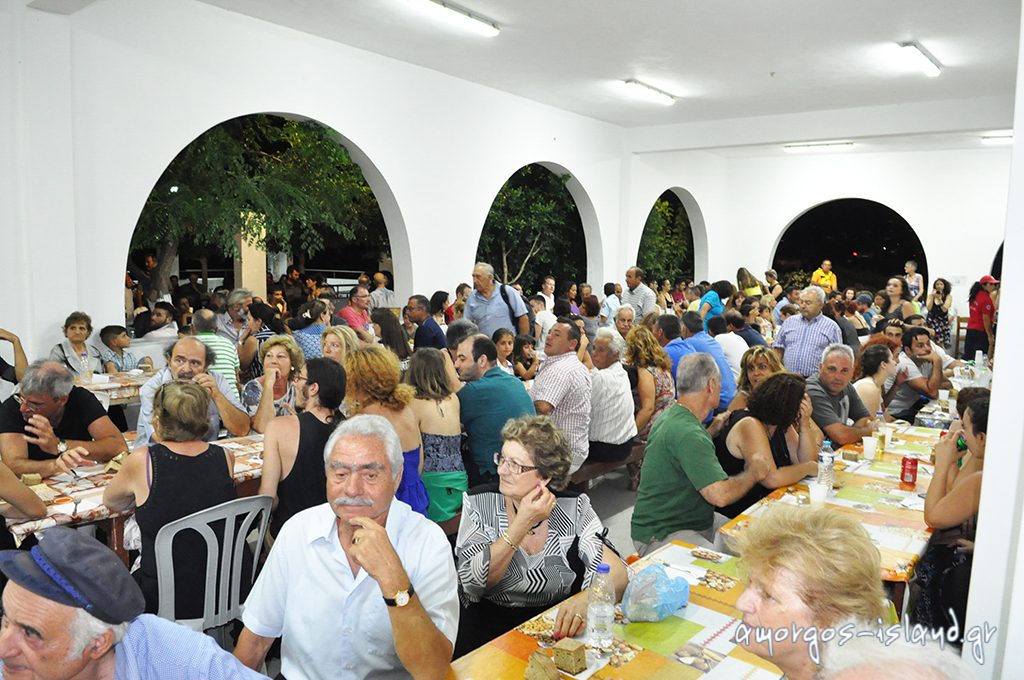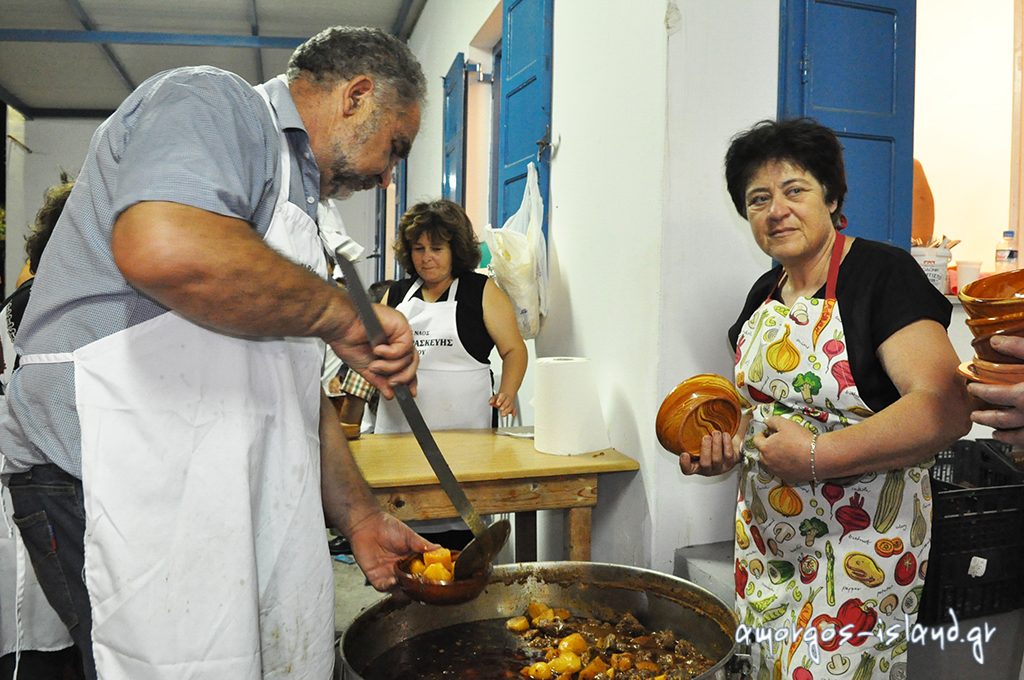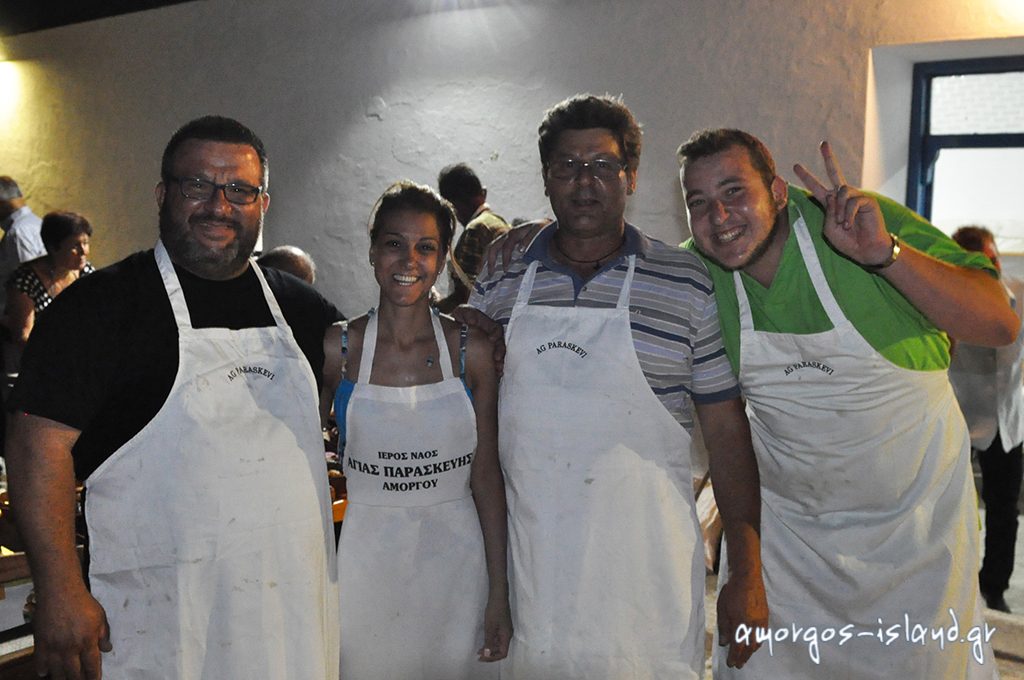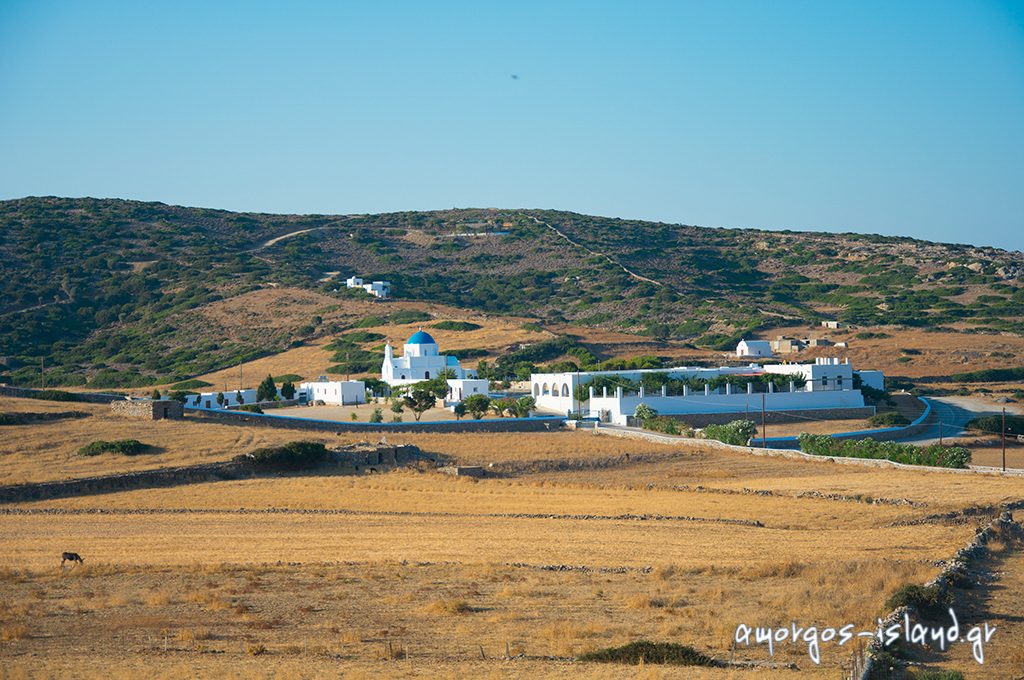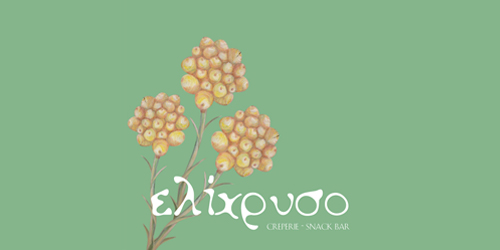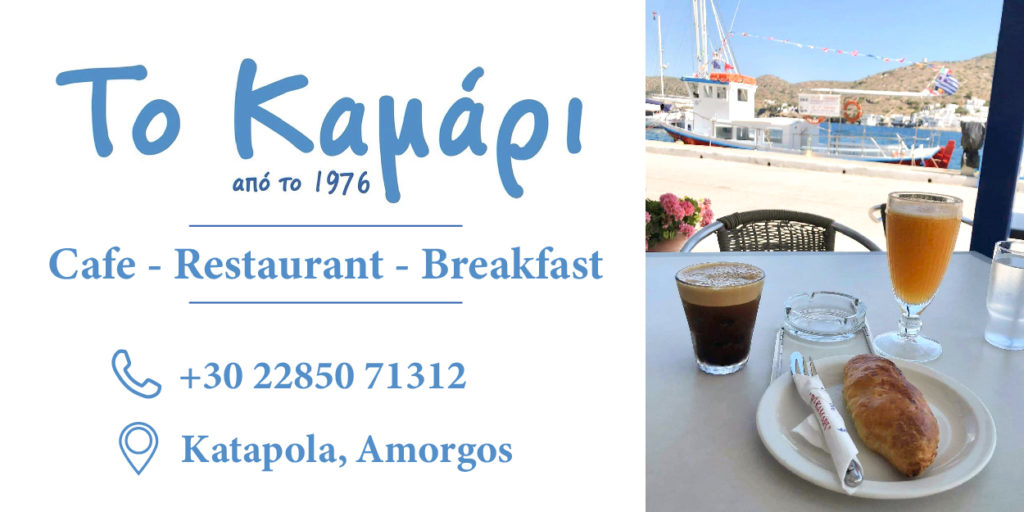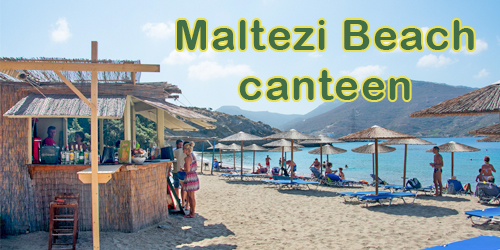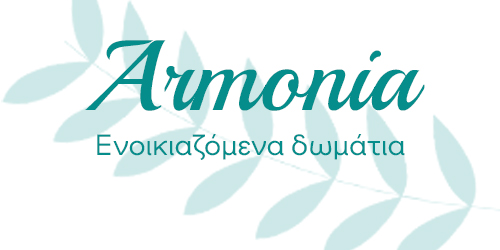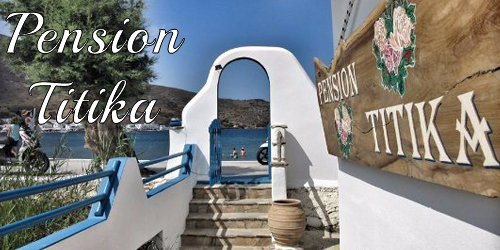Agia Paraskevi Feast in Kato Meria
Agia Paraskevi feast in Kato Meria-Amorgos is the largest among all the Greek islands with thousands of visitors every year, just to attend this great celebration.
Some 3,500 – 4,000 people on the eve of July the 25th attend the evensong and honor the Saint with their presence.
The Amorgians prepare for this day from the day of Aghia Marina on July the 17th.
Everybody offers the church wheat in order to make flour for the bread. It is the day when the flour is sifted, the sesame and the anise are cleansed, all necessary ingredients for making the bread.
Kneading starts on July the 23rd at noon and ends in the evening of the following day. About 800 handmade breads are baked in a traditional wood oven. This black bread, called “eftazymo” is made from local flour and yeast.
Food preparation begins on July the 23rd as well.
For the needs of this Amorgos event, 3 tons of sheep and goat, beef and pork meat are offered, as well as potatoes, a form of faith offer to Agia Paraskevi. They are cooked in around 13-15 large cooking kettles on traditional andirons.
On July the 25th all over the world, the food that Amorgians have prepared with much effort and passion is offered to everyone in stoneware; traditional Amorgian patatato, semolina stew (“kritharaki giouvetsi”), macaroni “kofto” with wheat and Amorgian myzithra cheese, xydato in the early hours, chickpeas and octopus risotto for people fasting and black “eftazymo” bread.
Plenty of wine, violins and laughs drive mood and dances going on until dawn on the day before the eve and on the eve of the feast.
In the evening, the local people refill the kettles to be ready for the next day.
On July the 26th, the day of the Saint, and after the Mass in the church, everybody is offered potato and xydato.
The feast of Agia Paraskevi is a unique experience.
Approximately 90 people work voluntarily on a day & night basis for one week each year and honor their protector by organizing the greatest celebration throughout the Aegean.
The church is surrounded by guest rooms for those who voluntarily serve her Grace, in order to organize and perform the feast. There is a galley, a slaughterhouse, a traditional wood oven, stone dining rooms and warehouses.
